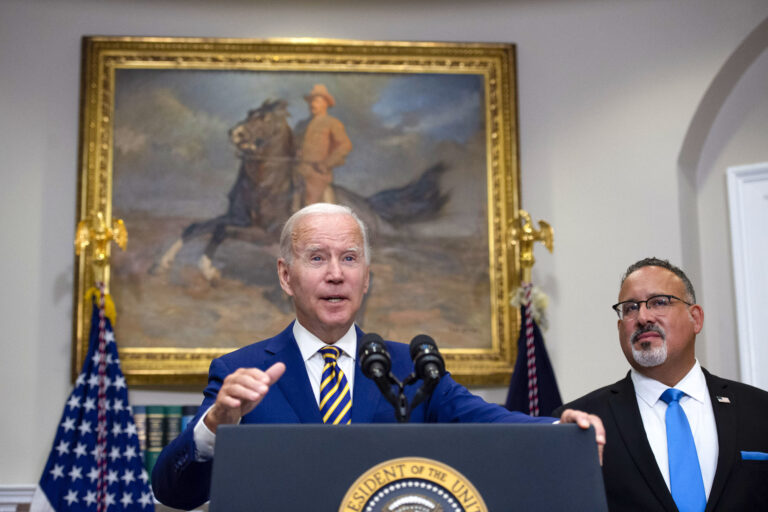A beta version of President Biden’s student loan forgiveness application is now open — the first time borrowers have been able to apply for up to $20,000 in debt cancellation.
The early opening is a test to help the Education Department find problems with the site before its official launch, which is expected later this month.
The department is only offering periodic access to the form — so borrowers may have to refresh the page or keep checking back.
Biden’s plan is to cancel up to $10,000 in debt for those earning less than $125,000 per year and up to $20,000 for those who received Pell Grants.
It’s hard to imagine a more anticipated form than the one tens of millions of federal student loan borrowers will need to complete to qualify for Biden’s debt relief plan. Earlier this week, senior administration officials revealed new details about the application. Here’s what else we know:
How long the application will be up: In a legal filing, the department said it “will not discharge any student loan debt under the debt relief plan prior to October 23, 2022.”
The application will be available through Dec. 31, 2023.
Where the application is posted: The application is live at studentaid.gov, and it’s available in English and Spanish.
What the application asks for: As U.S. Secretary of Education Miguel Cardona told NPR a few weeks ago, the application is quite simple. It requires only basic information, including name, birth date, Social Security number, phone number and an e-mail address.
Borrowers will not need what’s known as an FSA ID to log into the application, nor will they need to upload any documents, including tax records.
Will borrowers need to prove they meet the plan’s income requirements? Instead of having to provide documents that verify that you, as an individual, earned less than $125,000 in 2020 or 2021 or, as a couple, less than $250,000, the application simply asks borrowers to check a box to “certify under penalty of perjury under the laws of the United States of America that all of the information provided on this form is true and correct.”
A senior administration official told reporters that the U.S. Department of Education will closely match the information applicants provide with loan and income information it already has on file. In case of discrepancies, the department “will work with borrowers to secure additional documentation.”
The official said roughly 95% of borrowers should meet those income thresholds, though it’s not clear how many the department will flag for additional income verification.
How long will it take the department to process each application? When asked by NPR how long borrowers who fill out the application will have to wait before they see their debts canceled, one senior administration official said, “a matter of weeks.”
Timing matters because the department wants to discharge as many debts as possible before student loan payments resume in January.
In September, Cardona told NPR, “I will tell you, [by] January 1 when [loan repayment resumes], we have to have all that set up. So we know that, between October and before the loans restart, not only is the information going to be needed by all borrowers, but we’re going to have to be done with that process.”
On Tuesday’s call with reporters, a senior administration official backed-up Cardona’s timeline, saying the department plans to quickly process applications in November and December to discharge debts and limit borrower confusion come January.
9(MDM5MjE5NTg1MDE1Mjk1MTM5NjlkMzI1ZQ000))

